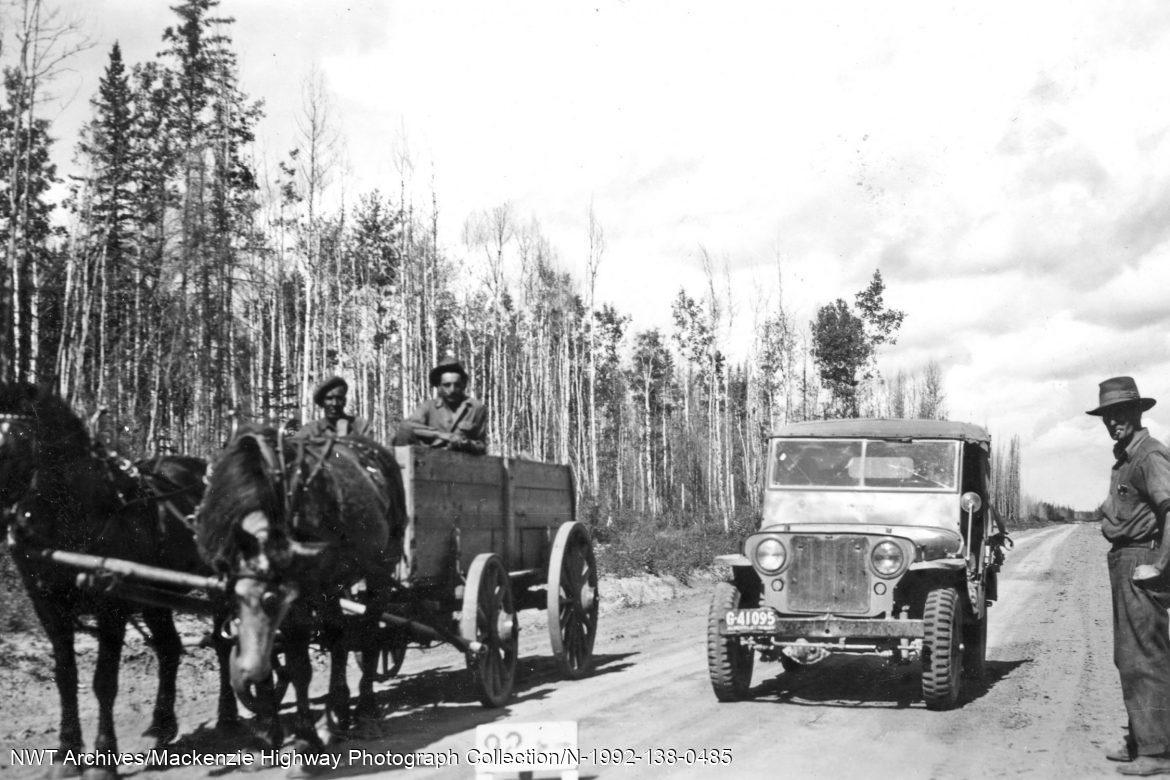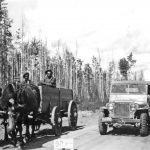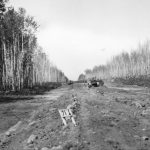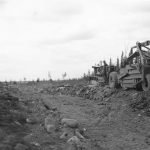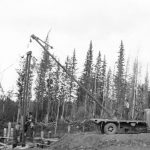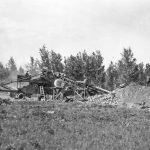1948
Mackenzie Highway
In November 1945, the Alberta and Canadian governments signed an agreement to build an all-weather road that followed the old cat train trail north from Grimshaw to the south shore of Great Slave Lake at Hay River. A road was of interest to both parties to improve the transportation system, which relied on expensive air freight, seasonal ice roads or precarious/limited barges to move people and goods into the Northwest Territories.
Numerous construction difficulties delayed the completion of the gravel road, initially planned for the fall of 1947, until the early winter of 1948, but people started to use it even before it was finished. On August 20, 1948, the first tourists to travel the road arrived in Hay River by automobile, having endured a 19-hour drive from Edmonton with limited services.
Two days later, the first commercial traffic arrived at Hay River when the W.R. Menzies Fishing Company of Faust, Alberta, hauled three 35-foot fishing boats over the new road and launched them in Great Slave Lake. Many saw the highway’s value in moving goods into and out of the Northwest Territories, bypassing the old water route through Fort Smith.
There were significant problems with the Alberta portion of the road just south of the NWT border. In the spring of 1949, this section of the highway became known as ‘The Hole.’ The 40-kilometre section from Steen River north to the NWT-Alberta border had been hastily completed in the fall of 1948. Engineers had underestimated the conditions, which led to fast road deterioration and closures. Without considerably more gravel, expense, and reconstruction, the highly touted road was nothing more than a rutted mud trail. Truckers referred to the NWT as ‘The Promised Land’ because the efforts to get there required intense dedication.
The Mackenzie Highway was so bad at the end of July 1949 that commercial fishing closed on Great Slave Lake because the fishers couldn’t send their catch south by truck. The road was in no condition to accept carloads of dignitaries from the south, and an official highway opening was quietly put aside. Ultimately, the Canadian and Territorial Governments made the repairs, recognizing the road as essential to creating an economically independent region and letting people travel independently.
Highway expansion opened the north to southern interests without consultation with any Treaty 8 or Treaty 11 Indigenous signatories whose land the highway crossed. Indeed, the building of highways in the North accelerated the rate of social and economic change, altering the lives of Indigenous people in the NWT. Resistance to highway building grew in the 25 years following the creation of the first segment of the Mackenzie Highway.
